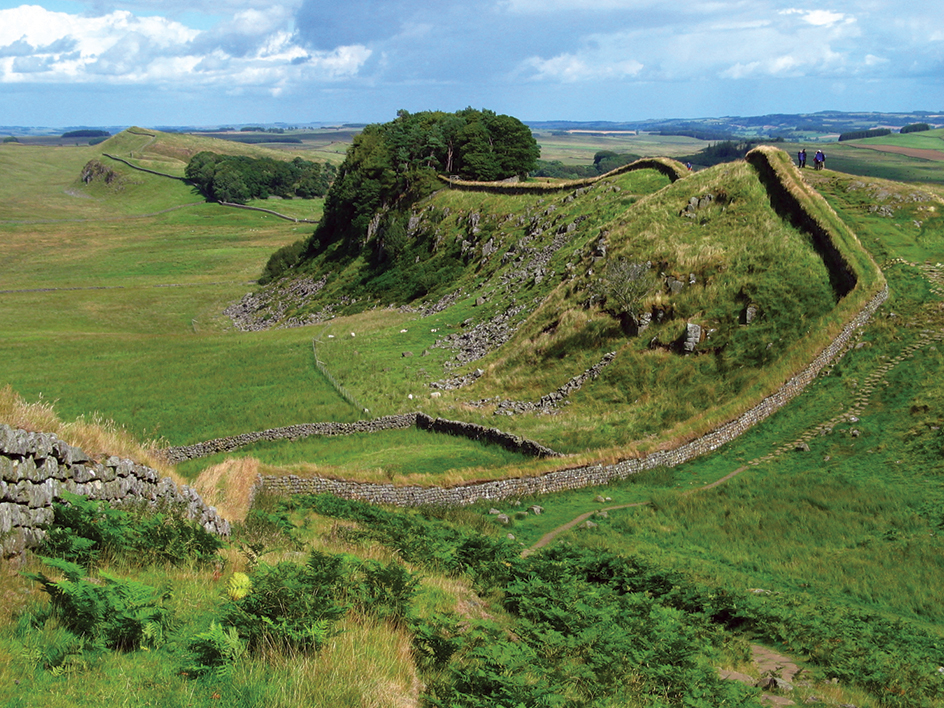Roman walls were barriers that the Romans built where no natural territorial boundaries existed. By A.D. 100, they had built a line of walls in what is now Romania and Germany. They later built Hadrian’s Wall and the Antonine Wall along the northern edge of the province of Britain. These walls were named for two Roman emperors, Hadrian and Antoninus Pius, and are the most famous Roman walls. The walls discouraged raids and revolts. But their main purpose was to remind the tribes on both sides that the Romans were masters. The walls also made it easier for the Romans to control trade and to collect taxes.

Hadrian’s Wall was built in the A.D. 120’s. It extended 73 miles (117 kilometers), from the mouth of the River Tyne to the Solway Firth. Parts still stand. The wall was about 10 feet (3 meters) wide at its base and 20 feet (6 meters) high. For half its length, it was all stone. The rest was stone and turf. Small forts, called milecastles, stood about 1 Roman mile (about 0.9 mile or 1.5 kilometers) apart along the wall, with small watch towers between the forts about every 1/3 Roman mile (0.3 mile or 0.5 kilometer). A ditch lay in front of the wall, with a wider ditch 10 feet (3 meters) deep behind it.
The Antonine Wall was built in the A.D. 140’s, north of Hadrian’s Wall. It was a simpler wall, made of turf, and it stretched for 37 miles (60 kilometers).
The Romans allowed Hadrian’s Wall to decay until 211, when they could no longer defend the Antonine Wall. Then they rebuilt Hadrian’s Wall carefully. They rebuilt it twice more in the 300’s, and defended it until nearly 400.
